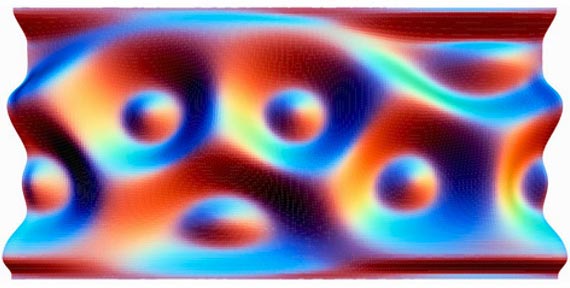Polymers to Polyhedrons

Beyond spherical. Adjusting the length and proportion of two kinds of polymer projecting from a miniscule bead would lead to a variety of geometric shapes, such as the one shown in this flattened density map of a spherical surface, according to computer simulations. Image Credit: Phys. Rev. Lett. 96, 248301 (2006).
Nanoparticles covered in stringy polymers might someday form the building blocks for drug delivery systems or disease assays. Researchers have made a few versions of these hairballs in various shapes, and now a computer simulation described in a recent report shows how to controllably make nanoscale 20-sided shapes (icosahedra) and other polyhedra. The trick is to adjust the lengths and abundances of the two types of polymers involved. The report takes aim at a continuing challenge in nanotechnology: how to engineer particles more complex than spheres.
Text courtesy of Physical Review Focus.
Read more about this research at Physical Review Focus.











